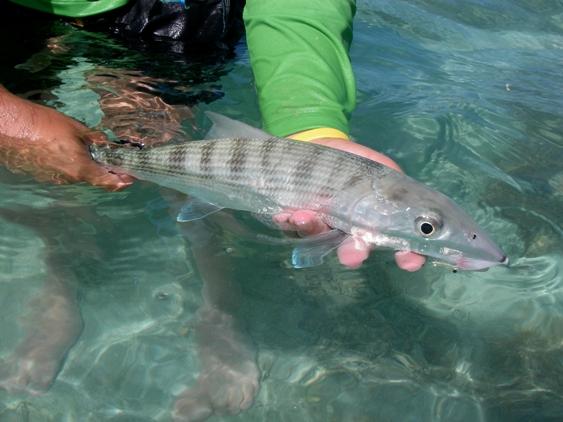
Bonefish Sex Party Discovered

Among bonefish, a species common throughout the shallow, tropical waters of the western Atlantic Ocean, the Caribbean population would be the supermodels and the football players of the fish world: they're among the biggest of the species and by far the most popular.
The silvery fish reach up to 31 inches (77 cm) in length and can weigh as much as 13 or 14 pounds (5.8 to 6.3 kilograms) and are beloved by anglers, who flock to the region to reel in the bonefish.
However, where these Caribbean bonefish go to get intimate has remained somewhat mysterious.
Thanks to some high-tech gadgetry, researchers have indulged in some virtual spying on bonefish, revealing that the species heads to deep waters, far from their coastal homes, for biweekly nighttime mating parties with more than a thousand guests.
"This is the first time movement patterns of bonefish to deep water have been formally described," said Andy Danylchuk, a researcher with the University of Massachusetts Amherst, in a statement.
Danylchuk, along with scientists from several other institutions, attached transmitter tags to 60 bonefish over the course of two years, from 2007 to 2009.
The tags revealed that for a few days, twice a month, from October to May, crowds of bonefish would gather around sunset, then head away from shore. Once in deep waters, under the cover of darkness, the bonefish got romantic.
Get the world’s most fascinating discoveries delivered straight to your inbox.
Their offshore mating frenzies appear to be fueled by moonlight, corresponding to the new moon and the full moon.
"One possible benefit of bonefish migrating to offshore locations to spawn is that it increases the dispersal of their fertilized eggs, especially with the high tides that happen with the new and full moons," Danylchuk said in a statement.
However, the researchers also discovered bonefish may like to show off a bit before getting down to business. They observed groups of fish leaping partway out of the water as they traveled to their favored breeding grounds, a behavior the researchers believe is likely associated with bonefish courtship.
"Knowing that bonefish are not residents of shallow flats alone means that pre-spawning aggregation sites and deeper reef habitats also need to be protected to ensure sustainable bonefish populations," Danylchuk said.
The research appears in an early online issue of the journal Marine Biology.
 Live Science Plus
Live Science Plus






